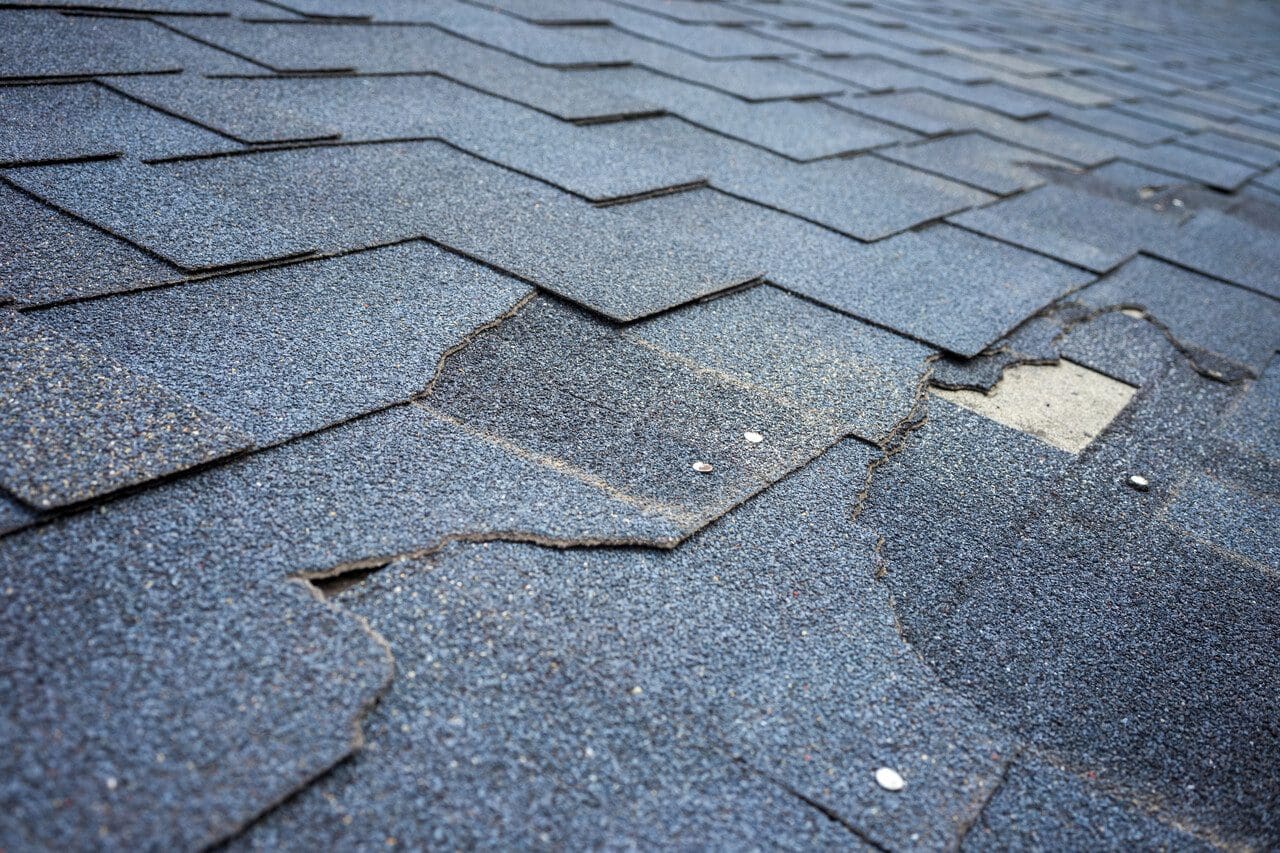Contact Us

9 Signs it’s Time for a New Roof
Year after year, the harsh elements take their toll on your home’s most vital structural feature. Roofs suffer damage from the scorching sun, howling winds, and monsoon storms. Even though some roofs have a 25-year lifespan, shingles inevitably deteriorate, age, bend, tear, or just fall apart.
If you’re considering a new roof, here are 9 signs to help you assess the situation from the ground.
The Roof is Almost 25
To find out when the roof was last replaced, look through renovation records or home purchase documents. Those made of asphalt shingles typically last 20 to 25 years. Once that window has passed, the majority of homeowners can start making plans for a new roof. It should be noted that the shingles may not last as long if they are installed on top of an existing layer of shingles. These applications often last only twenty years.
Your Neighbors Are Building A New Roof
The sound of roofing nailers in the area may be a warning for homeowners in developments and subdivisions. Since most projects only add a few homes at a time, the majority of the residences in the neighborhood are similar in age. Additionally, as the materials used in these homes are frequently those that the builder acquired in bulk, the roofs should age similarly. So perhaps “keeping up with the Joneses” is a good idea!
Shingles are Missing
Missing shingles are an ominous sign that may indicate the need for a new roof. This occurs when the shingle’s glue deteriorates, leading to shingle loss. While one or two missing shingles can often be repaired with a quick fix, improper installation could be a root cause, potentially necessitating a full new roof installation. Please note, that matching colors may vary after replacement.
Shingles Have Begun to Cup, Curl, or Claw
Cupping, curling, and clawing are clear warning signs that you may need a new roof. In both cupping and curling, the ends of the shingles lift away from the courses below them and start tipping upward. Clawing occurs when the middle of the shingle lifts off the roof while the ends remain in place. These conditions, often caused by high temperatures, faulty installation, inadequate ventilation, or simply old age, suggest that a new roof might be necessary.
Gutter Grit
Asphalt shingles have grit or granules implanted in their surface; these granules act as a shield between the sun and the shingle. It’s typical for some grit to come loose and fall off (especially when the roof is new). However, if granules are building up in the gutters every year, there may be an issue. Without the grit, the sun’s baking heat will cause the shingles to cup, warp, or otherwise degrade.
Split Shingles
It may be easy to see what appear to be cracks spread across two or three shingles from the ground. However, those aren’t cracks. In reality, they are tears caused by repeated heat expansion and contraction cycles. The shingles become larger as the roof warms up in the morning sun. They shrink when the temperature drops. These tiles eventually start to tear, making them the main source of leaks and structural damage.
Pieces of shingle in the yard
Sometimes shingles don’t come off in complete strips. Small pieces of shingles falling to the ground from a failing roof can also be common, and it’s not always clear where they came from. After several windstorms, homeowners who discover small pieces of shingles in their yards should inspect their roofs closely or hire a professional to do so.
Sagging Roof
One of the most obvious indications that you require a new installation is a sagging roof. When there is a structural problem underneath the shingles, such as significant water damage or a damaged rafter, sagging results. To find the source of the issue in either scenario, a contractor will have to take off the shingles and plywood sheathing.
Water Damage
A pretty obvious symptom that the roof is failing to do its job is apparent water damage inside the house. Ice dams, damaged roofs, degraded flashing, or improper installation methods could all be to blame for this damage. Whatever the cause, homeowners should immediately consider replacing or fixing their roofs because leaks don’t go away on their own. Mold growth and pests like carpenter ants could result from a leaky roof.
Does any of this sound familiar? If you’ve seen signs that your roof might be ready for repair or replacement, get in touch. Our team at NFR is ready to help you assess the best way forward.
